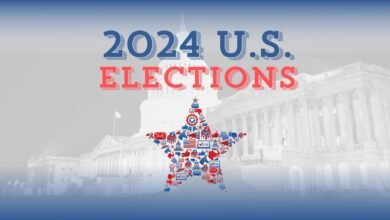Why companies get inflation wrong

Why companies get inflation wrong
In a world where market dynamics shift with unprecedented velocity, why companies get inflation wrong remains a critical question that too many businesses grapple with. Common mistakes businesses make about inflation can derail a meticulously crafted growth strategy, leading to unforeseen financial turbulence. But understanding why companies misunderstand inflation requires a deep dive into the causes of inflation misjudgment in businesses. When it comes to the intricate dance of numbers and economic indicators, it is all too easy to see how businesses get inflation calculations wrong. Consequently, reasons companies misunderstand inflation don’t just appear from thin air; they stem from a cocktail of hidden pitfalls and misinterpreted data. Thus, the ability to decode these complexities will not only illuminate the common mistakes businesses make about inflation but also pave the way for more accurate forecasting. Let’s explore how companies can better predict inflation and empower themselves to navigate the choppy waters ahead with precision and confidence.
Why companies get inflation wrong Understanding the Importance of Accurate Inflation Measurement
In today’s dynamic economic landscape, understanding the importance of accurate inflation measurement is crucial for company success. Businesses across industries often grapple with the challenge of predicting inflation accurately, which can lead to operational missteps and missed opportunities. But why is this understanding so vital?
First and foremost, inflation affects everything from product pricing to employee salaries. A miscalculation can cascade through the entire business, affecting profitability and competitiveness. For instance, without precise inflation measurement, a company may set product prices too high, deterring customers, or too low, resulting in thin profit margins.
Furthermore, accurate inflation measurement aids in budget forecasting. When businesses misunderstand inflation trends, they risk underestimating costs, which can disrupt operations and financial stability. Imagine planning a yearly budget based on incorrect inflation expectations. Such a scenario could lead to underfunding key areas like marketing or research and development, hampering growth and innovation.
Key Areas Impacted by Inflation Misunderstanding
| Area | Impact of Misjudgment |
|---|---|
| Product Pricing | Inaccurate pricing leads to lost revenue or sales. |
| Employee Salaries | Risk of employee dissatisfaction and turnover. |
| Budget Forecasting | Unanticipated budget shortfalls. |
| Investment Decisions | Misguided investments and missed growth opportunities. |
Moreover, investment decisions hinge on future economic conditions. Businesses misjudging inflation might shy away from beneficial investments, fearing artificial cost inflation, or may overspend, anticipating nonexistent inflation-driven income increases.
So, why companies get inflation wrong often boils down to relying on outdated or imprecise data, neglecting the nuances of economic indicators, and not leveraging advanced analytics tools. How businesses get inflation calculations wrong can be attributed to ignoring global market trends or undervaluing external economic influences, leading to misaligned business strategies.
In conclusion, understanding the importance of accurate inflation measurement can empower your business to make insightful, data-driven decisions. By avoiding the common mistakes businesses make about inflation, you place your company on a path toward sustained growth and resilience, no matter how the economic winds blow.
Common Misconceptions: Why Companies Misunderstand Inflation
When it comes to inflation, even the most astute businesses can sometimes fall prey to misconceptions. Understanding why companies misunderstand inflation is key to addressing these errors and refining strategy.
Inflation Misinterpretation: Key Reasons
- Simplistic Views on Inflation: Many companies reduce inflation to simply the rise in commodity prices. However, inflation is a complex beast influenced by multifarious factors such as global events, supply chain disruptions, and market demand shifts.
- Ignoring Macro-Economic Indicators: Why companies get inflation wrong often originates from neglecting broader economic signals. Key indicators such as employment rates, consumer spending, and fiscal policies provide crucial insights into inflation trends.
- Over-Reliance on Historical Data: Past performance does not always predict future trends. Businesses that anchor their inflation estimates solely on historical data may fail to capture the current dynamic market conditions.
Common Mistakes Businesses Make About Inflation
- Confusing Correlation with Causation: Just because two variables move together does not mean one causes the other. This misconception can lead to misguided decisions when understanding why companies get inflation wrong.
- Neglecting External Factors: International trade policies, geopolitical tensions, and global pandemics are external factors that significantly impact inflation rates but are often overlooked by businesses.
- Misinterpreting Pricing Signals: How businesses get inflation calculations wrong can also stem from misreading pricing trends. Prices may rise due to temporary supply shortfalls rather than long-term inflationary pressures.
| Misconception | Description |
|---|---|
| Simplistic Views | Reducing inflation to commodity prices alone |
| Ignoring Macro-Economic Indicators | Overlooking broader economic signals |
| Over-Reliance on Historical Data | Using historical data without considering current conditions |
| Confusing Correlation with Causation | Mistaking correlation for causation |
| Neglecting External Factors | Ignoring international trade and geopolitical tensions |
| Misinterpreting Pricing Signals | Misunderstanding temporary price rises for long-term inflation |
By recognizing these causes of inflation misjudgment in businesses, companies can avoid common pitfalls. Adopting a comprehensive and nuanced approach to inflation measurement will not only mitigate risks but also pave the way for more effective and resilient business strategies. Understanding these common mistakes businesses make about inflation is the first step towards accurate forecasting and robust economic health.
The Hidden Causes of Inflation Misjudgment in Businesses
Grasping why companies misunderstand inflation is crucial for their long-term success. Numerous causes of inflation misjudgment in businesses lurk beneath the surface, often hidden from plain sight. Let’s dive into the underlying reasons that lead companies astray when predicting inflation.
Over-Reliance on Historical Data
One significant error involves relying too heavily on past inflation trends without considering current economic shifts. Historical data is valuable, but assuming that tomorrow will mirror yesterday can cloud judgment. The market’s dynamic nature requires businesses to stay agile and proactive rather than reactive.
Lack of Diverse Input Sources
Another reason why companies get inflation wrong is the underutilization of diverse information sources. Relying solely on internal data or a limited set of external reports restricts the perspective needed to gauge inflation accurately. By incorporating a broader range of economic indicators, businesses can enhance their forecasting capabilities.
Ignoring Global Economic Influences
It’s a common mistake to overlook international factors that significantly impact domestic inflation. Global supply chain disruptions, changes in foreign exchange rates, and international trade policies play pivotal roles. Why companies misunderstand inflation is often due to a myopic focus on local economic conditions.
Inadequate Inflation Models
The models used to predict inflation can sometimes be inherently flawed. If they fail to capture real-time variables and sudden geopolitical events, businesses might find themselves blindsided. This inadequacy can stem from outdated algorithms or the lack of real-time data integration.
Short-Term Focus
Many businesses operate with a short-term mindset, prioritizing immediate profits over long-term stability. This approach can lead to inflation misjudgment as the foresight required to predict inflation effectively extends beyond quarterly earnings.
Steps to Avoid Misjudgment
To combat these hidden causes, companies should:
- Incorporate multi-faceted data sources
- Stay updated on global economic trends
- Enhance inflation models with real-time data integration
- Adopt a long-term strategic vision
Understanding these hidden factors will empower businesses with the clarity needed to navigate inflation risks successfully and strategically. The journey to better predict inflation begins with recognizing and rectifying these common pitfalls.
How Businesses Get Inflation Calculations Wrong
Inflation can be a tricky beast to tame, and many businesses stumble when it comes to accurate calculations. How businesses get inflation calculations wrong can often be traced back to a series of common mistakes and overlooked factors. It’s essential for companies to acknowledge and address these pitfalls to remain competitive and resilient.
Key Missteps in Inflation Calculations:
- Overreliance on Historical Data:
- Issue: Businesses often depend too heavily on historical data without accounting for current market shifts and emerging trends.
- Solution: Balance historical data with real-time market analysis to form a well-rounded perspective.
- Ignoring External Influences:
- Issue: External factors like geopolitical events, supply chain disruptions, and natural disasters can significantly impact inflation but are often neglected.
- Solution: Incorporate a comprehensive risk assessment that factors in potential external influences.
- Misunderstanding the Causes of Inflation:
- Issue: Misidentifying the root causes of inflation, such as cost-push versus demand-pull inflation, leads to flawed calculations.
- Solution: Educate key personnel on different inflation types and their unique causes.
- Failure to Adjust for Regional Variances:
- Issue: Inflation rates can vary greatly by region. Companies that apply a national average may face regional misalignment.
- Solution: Analyze inflation on a regional basis to obtain a more accurate picture.
Common Mistakes and Corrective Measures:
| Mistake | Impact | Corrective Measure |
|---|---|---|
| Overreliance on historical data | Misjudging future trends | Integrate real-time data analysis |
| Ignoring external influences | Unexpected disruption impacts | Conduct comprehensive risk assessments |
| Misunderstanding inflation causes | Inaccurate root cause identification | Educate on inflation types |
| Not adjusting for regional variances | Regional misalignment | Analyze inflation by region |
By understanding these key factors, businesses can better navigate the complex landscape of inflation. Ensuring accurate calculations is not merely a matter of number-crunching; it requires a strategic, informed approach. Recognizing the reasons companies misunderstand inflation and implementing robust measures can empower businesses to predict and react more effectively to inflationary pressures. This, in turn, allows for more agile and resilient business strategies, helping companies stay ahead of the curve.
Learning the common mistakes businesses make about inflation is the first step. By addressing these critical issues proactively, companies can foster a more accurate and dynamic approach to inflation forecasting and management.
The Impact of Inflation Misjudgment on Business Strategies
In an increasingly volatile economic landscape, businesses must develop accurate, reliable strategies for predicting inflation. Yet, many fall short due to a range of errors and oversights. Why companies get inflation wrong can often be traced back to a misunderstanding of economic indicators or reliance on outdated data. But how does this misjudgment affect business strategies?
Financial Planning and Budgeting
Misunderstanding inflation can wreak havoc on financial plans and budgets. If businesses underestimate future inflation rates, they could find themselves with insufficient resources to cover rising costs.
- Underestimating Costs: Businesses might allocate less than needed for raw materials and services, leading to operational disruptions.
- Cash Flow Problems: Companies may experience cash flow shortages, jeopardizing their ability to meet financial obligations.
- Investment Mistakes: Misplaced confidence in the inflation rate can lead to flawed investment strategies and significant financial losses.
Pricing Strategies
Accurately predicting inflation is crucial for developing effective pricing strategies. Common mistakes businesses make about inflation can lead to incorrect pricing decisions that might either alienate customers or damage profit margins.
- Overpricing: Overestimating inflation may compel businesses to increase prices unnecessarily, driving away price-sensitive customers.
- Underpricing: Conversely, underestimating inflation might cause them to set prices too low, eroding profit margins over time.
Long-term Strategic Planning
Inflation misjudgment can derail long-term strategies in more profound ways. Companies need to incorporate inflation forecasts into their strategic planning to ensure sustainable growth.
| Strategic Error | Description |
|---|---|
| Expansion Miscalculations | Companies planning to expand might find themselves overleveraged if inflation spikes unexpectedly. |
| M&A Pitfalls | Misjudging inflation can impact the valuation of potential mergers and acquisitions, leading to misguided business moves. |
| R&D Budgeting | Underfunding innovation due to underestimated inflation can stifle R&D and halt growth. |
Operational Inefficiencies
When businesses get inflation calculations wrong, operational inefficiencies may arise. The need to frequently adjust processes and supply chain logistics to cope with inflation volatility can derail overall efficiency.
- Supply Chain Disruptions: Misjudged inflation forecasts can hamper the ability to manage procurement and supply chains effectively.
- Labor Cost Adjustments: Companies might struggle to adjust wages and retain talent if their inflation predictions are off mark.
By addressing how companies can better predict inflation, firms can develop more resilient, informed strategies that navigate economic fluctuations gracefully. Understanding the potential pitfalls allows for proactive measures, ensuring businesses stay competitive and financially stable regardless of external economic conditions.
Remember: The key to mitigating the impact of inflation misjudgment lies in continuous education, leveraging accurate data, and adapting dynamically to changing economic trends.
Learning from Mistakes: Real-life Examples of Inflation Misunderstanding
Understanding why companies get inflation wrong isn’t just about recognizing the theoretical errors; real-life examples offer valuable lessons. Let’s delve into some eye-opening case studies where businesses encountered pitfalls from inflation misjudgment and the subsequent consequences they faced.
The Retailer’s Pricing Predicament
Consider the case of a well-known retail giant that drastically miscalculated inflation effects. Believing inflation was transient, they hesitated to adjust prices in a timely manner. This led to significant inventory costs, decimating their profit margins. Here are some causes of inflation misjudgment in businesses that surfaced:
- Overconfidence in economic projections: The company relied heavily on overly optimistic forecasts.
- Lag in response time: Delayed price adjustments resulted in financial discrepancies.
The Auto Manufacturer’s Supply Chain Struggles
Another striking example involves a leading auto manufacturer who underestimated inflation’s impact on their supply chain. They assumed raw material costs would stabilize, but inflation persisted, driving component prices sky-high. This mistake forced them to halt production temporarily, illustrating common mistakes businesses make about inflation:
- Ignoring supply chain vulnerabilities: Failure to anticipate price surges in critical materials.
- Lack of flexible pricing strategies: Inability to adjust production costs to maintain profitability.
| Business Error | Consequence | Lesson Learned |
|---|---|---|
| Misjudging transient inflation as a retailer | Sagging profit margins due to lagged price increases | Always incorporate flexible pricing mechanisms |
| Underestimating raw material cost increases | Production halts and supply chain disruptions | Emphasize proactive supply chain management |
A Tech Company’s Wage Woes
In the tech sector, a startup miscalculated inflation’s effect on wages. Expecting labor costs to remain stable, they did not increase salaries proportionate to the rising cost of living. This resulted in high employee turnover, stalling innovations. Reasons companies misunderstand inflation in this context include:
- Neglecting comprehensive wage evaluations: Ignoring the broader economic impact on employee livelihoods.
- Lack of contingency planning: Not foreseeing the necessity for salary adjustments.
Key Takeaways for Businesses
These instances underscore the profound impact inflation misjudgment can have on diverse sectors. To steer clear of these pitfalls, companies should prioritize:
- Proactive economic assessments: Regularly update economic models and assumptions.
- Agile financial strategies: Maintain flexible pricing, wage, and supply chain strategies.
- Employee well-being: Ensure salary adjustments align with economic conditions.
By learning from these mistakes, businesses can pave their way to a more resilient and adaptive approach to inflation management, avoiding the common mistakes businesses make about inflation and ensuring a robust, forward-thinking strategy.

Strategies for Better Predicting Inflation
Understanding how to combat and forecast inflation effectively is paramount for companies aiming to thrive in volatile economic climates. As businesses often navigate complex financial landscapes, how companies can better predict inflation becomes increasingly crucial. By employing robust strategies, companies can significantly enhance their forecasting capabilities. Here are some actionable insights to guide your business.
1. Embrace Technology and Data Analytics
In today’s data-driven age, leveraging advanced analytics and machine learning can tremendously boost inflation prediction accuracy. Using real-time data allows for:
- Consistent monitoring of economic indicators.
- Proactive adjustment of pricing and cost strategies.
- Data-driven decision-making, minimizing guesswork.
2. Diversify Economic Data Sources
Relying on varied and reputable sources helps in painting a comprehensive picture of the economic environment. Some vital sources include:
- Government reports (e.g., Consumer Price Index, Producer Price Index).
- International economic data for a global perspective.
- Industry-specific reports to keep an eye on sectoral trends.
3. Regularly Update Economic Models
Static models can quickly become obsolete. Consistently updating economic models ensures they reflect the latest market conditions and trends. Key factors to consider are:
- Economic shocks (pandemics, geopolitical events).
- Industry evolutions (new technologies, regulatory changes).
- Consumer behavior shifts, crucial for demand forecasting.
4. Collaboration with Economic Experts
Collaborating with economists and financial analysts can provide valuable insights and external perspectives. This collaboration can take forms such as:
- Regular consultations with experts.
- Training sessions for your financial team.
- Subscription to specialized economic forecasting services.
5. Adaptive Business Strategies
Finally, businesses need to remain flexible. By having adaptive strategies, companies are better equipped to handle unexpected inflationary trends. Measures include:
- Flexible pricing models that can adjust with inflation.
- Dynamic budget planning to cater to economic fluctuations.
- Regular financial performance reviews to tweak strategies as needed.
Table: Key Strategies for Predicting Inflation
| Strategy | Key Actions | Benefits |
|---|---|---|
| Embrace Technology and Data | Utilize advanced analytics and real-time data | Increased accuracy, proactive decisions |
| Diversify Data Sources | Incorporate varied and credible economic reports | Comprehensive economic understanding |
| Update Economic Models Regularly | Reflect current market conditions, consider shocks | Relevant and accurate forecasting |
| Collaborate with Experts | Partner with economists and financial analysts | Expert insights and robust predictions |
| Implement Adaptive Strategies | Ensure flexibility in pricing and budget planning | Enhanced resilience and strategic agility |
By incorporating these strategies, your business can not only better predict inflation but also leverage these predictions to stay one step ahead in an ever-evolving economic landscape. Empowering your business with these insights will ensure a more stable, prosperous future.
Empowering Your Business to Stay Ahead of Inflation
In the ever-changing economic landscape, empowering your business to stay ahead of inflation is not just a strategic advantage but a necessity. Understanding the complexities of inflation isn’t enough; businesses need to take proactive steps to mitigate its effects and seize opportunities.
1. Educate Your Team
Keep your team informed and educated about inflation dynamics. Regular training sessions on macroeconomic trends, along with workshops on financial strategies, can enhance their capability to predict and manage inflation. This knowledge helps in making informed decisions and staying agile.
2. Optimize Financial Planning
Effective financial planning is crucial. Consider incorporating inflation forecasts into your budgeting and financial models. Diversify investments to hedge against inflation risks. Use tools and software that offer real-time data on economic indicators to refine your strategies continuously.
| Financial Planning Tips | Description |
|---|---|
| Incorporate Inflation Forecasts | Use historical data and models to anticipate inflation trends. |
| Diversify Investments | Invest in assets like commodities, real estate, or stocks that typically outperform during inflation. |
| Use Real-Time Data | Employ financial software that provides up-to-date economic indicators. |
3. Adjust Pricing Strategies
Review and adjust your pricing strategies regularly to reflect rising costs. Transparent pricing policies can help in maintaining customer trust while compensating for increased expenditure. Consider value-based pricing to ensure your products or services are perceived as worth the cost.
4. Strengthen Supplier Relationships
Inflation affects the entire supply chain. Building strong relationships with suppliers can secure better terms and pricing. Long-term contracts with price adjustment clauses can provide stability and predictability.
5. Long-Term Contracts
Engage in long-term contracts with both suppliers and customers. These contracts can include clauses that account for inflation, ensuring that your business remains profitable regardless of economic fluctuations.
In summary, how companies can better predict inflation and take preventive steps lies in continuous learning, robust financial strategies, attentive pricing, and resilient relationships. By adopting these measures, businesses can not only stay ahead of inflation but also turn its challenges into opportunities. Each step taken is a stride toward financial resilience and sustainable growth, propelling your business towards a robust future.
Remember, the key is not just to react to inflation but to anticipate and prepare for it. Empower your business to stay resilient and thrive in any economic climate.



